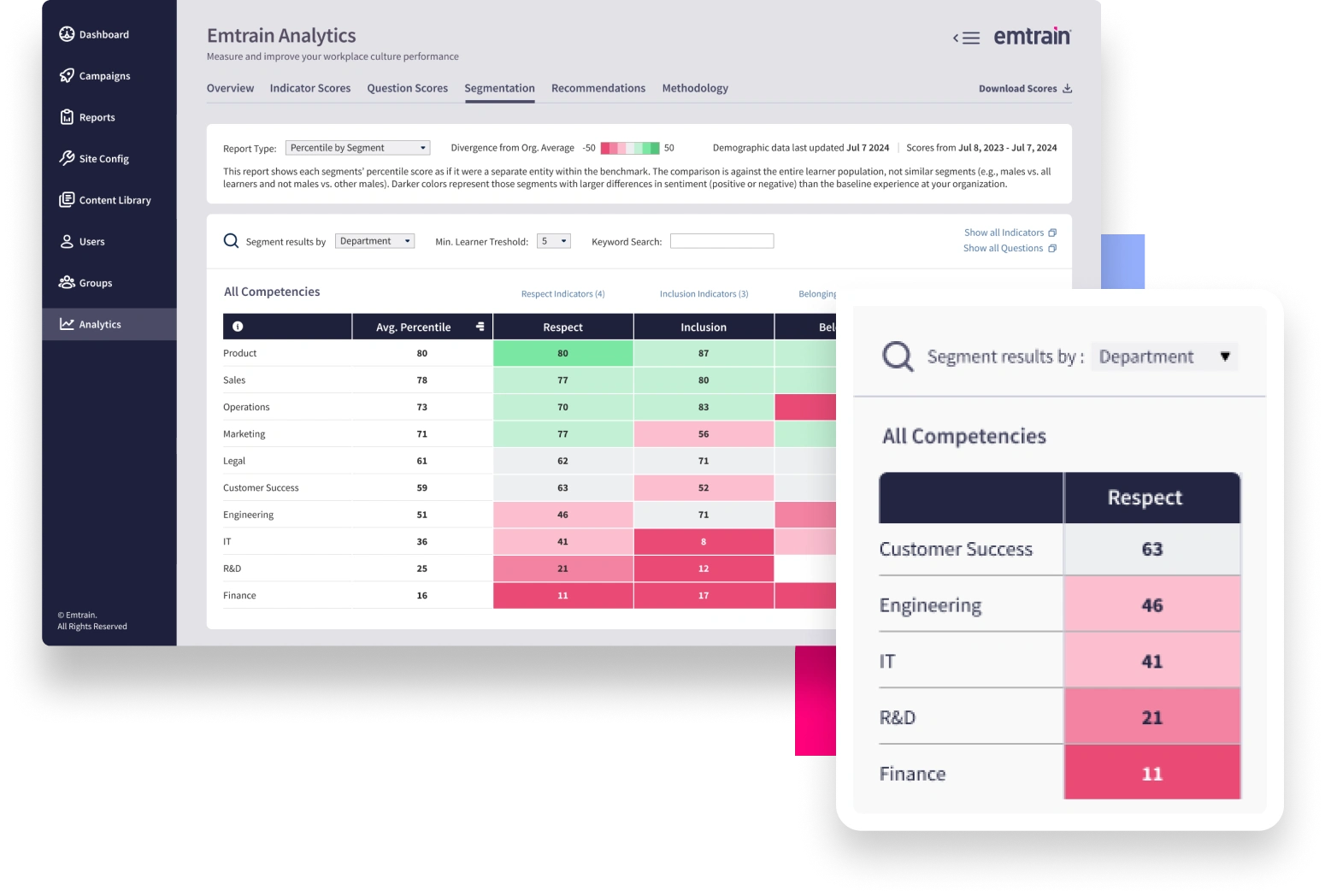Intellectual Property (IP) refers to intangible creations of the human mind—such as inventions; literary and artistic works; designs; symbols, names, and images used in commerce—that are protected by law through various mechanisms like patents, copyrights, trademarks, and trade secrets. These protections give the creator or owner certain exclusive rights, intended to encourage innovation and creativity.
Emtrain’s harassment training course is engaging, interactive, and designed to spot and reduce EEO risk.

Misuse of intellectual property in a workplace happens when any protected IP is used, shared, or reproduced without appropriate permission, license, or adherence to IP laws and company policy. This may involve:
Here are concrete workplace scenarios involving IP, both where misuse might occur and how IP can correctly be handled:
| Scenario | Example of Use / Misuse | Why It Matters / What Could Go Wrong |
|---|---|---|
| Software, code, or algorithm misuse | An employee copies code from a third-party library under restrictive license into company software without abiding by license terms. | Could violate open-source license or proprietary software rights; legal risk, potential for costly remediation. |
| Using third-party content in marketing | Using stock photos, copyrighted music, or video clips in advertisements without licensing or attribution. | Infringement risks; reputational damage; possible financial liability. |
| Trademark confusion | Using a logo or brand name in materials that’s confusingly similar to another business’s trademark. | Risk of trademark infringement, brand dilution, possible cease-and-desist or lawsuit. |
| Patented inventions | Developing a product that uses a process patented by someone else, without licensing or agreement. | Could result in infringement claims, injunctions, royalty payments. |
| Using trade secret information | A worker brings knowledge of confidential client lists or processes from a former employer and uses them. | Misappropriation of trade secret; potential legal and ethical issues. |
| Proper IP management | Getting licenses for images, registering trademarks, using non-disclosure agreements for sensitive internal innovation. | Maintains legal compliance, protects company reputation, preserves competitive advantage. |
To manage IP responsibly and avoid misuse, organizations should adopt structured practices:
Clear IP Policy & Governance
Employee Education & Training
Use Agreements, Contracts & Licenses
Record Keeping & Documentation
Access Controls & Security Measures
Legal Review & Monitoring
Cultivate Culture of Respect for IP